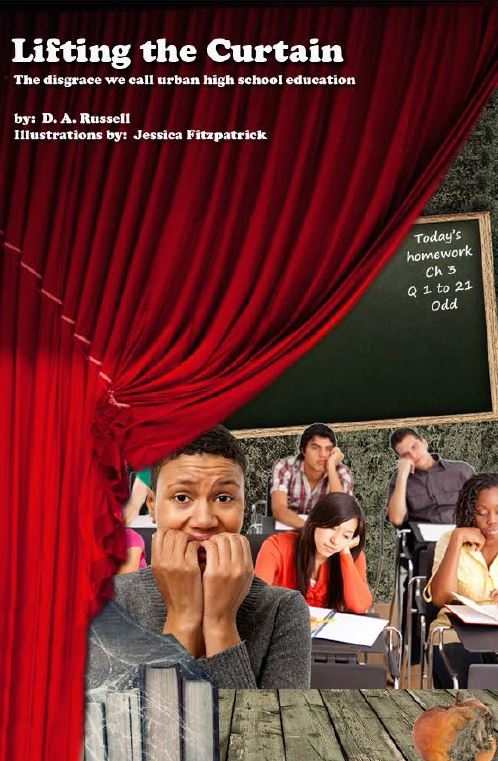Lifting the Curtain
The disgrace we call urban high school education
As an urban high school teacher, Russell has a unique perspective on what’s wrong with the system.
There is a crisis in public education in the United States. It’s a familiar story—one that’s in the news every day—and everyone has an opinion about how to fix it. Few news items, however, examine the crisis from the teacher’s perspective. D. A. Russell does just that in this scathing critique of a particularly problematic part of the US public school system: urban high schools. In Lifting the Curtain: The disgrace we call urban high school education, the longtime math teacher calls on politicians and the media to stop blaming teachers for our educational woes and instead look at the inherent flaws in the system.
A variety of techniques are used to deliver the book’s message, from satirical cartoons (courtesy of student artist Jessica Fitzpatrick) to student survey results and quotations from frustrated colleagues. Russell’s own frustration, however, is the driving force here. Although he apologizes for his derisive tone, his anger about the collapsing school system is clear throughout the text.
Parents are painted as uncaring and uninvolved, more likely to spend the afternoon at the nail salon than at a teacher conference. Principals fare no better, as Russell states that two-thirds of all principals are “unqualified and incompetent to address today’s issues.” Blaming the bureaucracy of the urban high school system itself for the rampant cronyism that rewards only a select few teachers, and decrying the “everybody wins” mentality he feels forces teachers to pass students regardless of their efforts, Russell implicates just about everyone.
Russell offers a unique perspective as an urban high school teacher who has witnessed the rise of the inclusion classroom, content codification via Common Core standards, and the proliferation of standardized tests. The book’s message, however, might be better received if it were to balance criticism of what doesn’t work with a deeper look at what might work better. More examples of how excellent principals manage their schools, or the difference a truly involved parent makes, for instance, would be more instructive. Instead, the solutions are saved for a short final chapter, which the author says intentionally lacks specificity so it can provide the “foundation of a complete solution” that allows others with more experience to “work out the details.”
The details Russell does provide run the gamut from verifiable Department of Education statistics to estimates made by the author himself. Prefacing these with the caveat that there is “no data I can cite” to support the estimates, he goes on to quantify things such as the proportion of superintendents who have received sufficient management training and the percentage of actively corrupt principals. In these cases, anecdotes from Russell’s own experience might be more illustrative than unverifiable quantification of trends.
In Lifting the Curtain, Russell lends a passionate voice to the current conversation about the fate of our schools. It’s sure to spark spirited debate and discussion among teachers, parents, and principals.
Reviewed by
Sheila M. Trask
Disclosure: This article is not an endorsement, but a review. The publisher of this book provided free copies of the book and paid a small fee to have their book reviewed by a professional reviewer. Foreword Reviews and Clarion Reviews make no guarantee that the publisher will receive a positive review. Foreword Magazine, Inc. is disclosing this in accordance with the Federal Trade Commission’s 16 CFR, Part 255.

